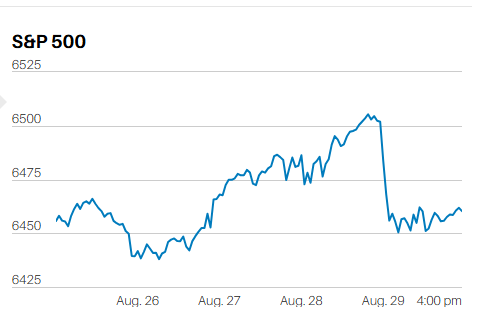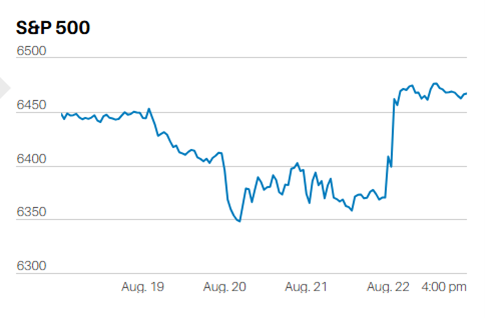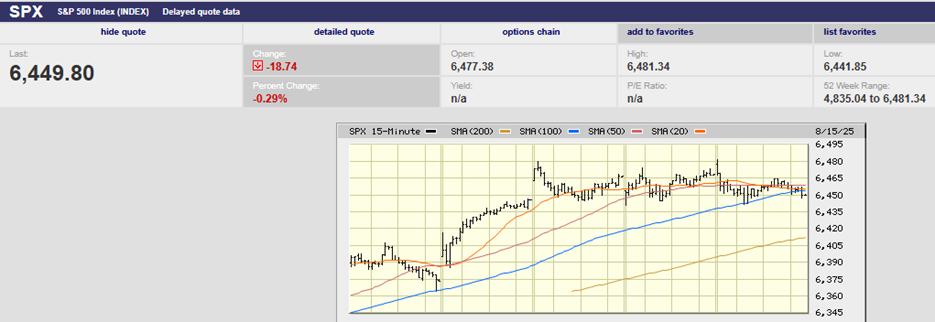Quantitative tightening will begin in May

Market Update
The S&P 500 lost 1.3% last week to close at 4488.28. The Nasdaq lost 3.9% and is now down 12% on the year. We wrote in last week’s newsletter we were skeptical of the jam higher in the last half-hour of trading a week ago Friday. We speculated that the artificial nature of the buying meant the gains would evaporate on Monday. They didn't. Instead, the rally continued into Tuesday morning. Investors made a valiant effort to take out resistance at 4600 in the process. They came up a few points short. The S&P peaked for the week Tuesday morning; less than 10 points shy of 4600. The 4600 level has become a line in the sand. The market hasn’t been able to cross and hold 4600 since it first tried in early February.
Trading ranges are defined by failed efforts to break out to the upside. The failures often lead to rapid declines to the bottom of the trading range. Breakdowns from the trading range are always possible. It will not surprise at all if we see a rapid fall to the 4200-region given last week’s failed attempt to take out 4600. We would expect the bottom of the range to hold. In fact, it’s possible that the S&P will remain in a 400-point trading range for the rest of the year.
We may see a continuation of the rotation out of high-priced growth stocks and into low-priced value stocks. Such a rotation could keep the index from going anywhere fast. It would continue to punish the crowded growth stock trade and reward the far less crowded value trade. Of course, since Norwood Economics is a value shop that could be wishful thinking on our part.
Because the economy is slowing as well. A slowing economy will hurt earnings. Many value stocks are tied to the ebb and flow of the economy. Further, it is now conventional wisdom that the Fed will raise the fed funds rate to 2.5% - 2.75% by year-end. The 10-year Treasury has already priced it in, rising to 2.72% last week. Higher interest rates will accelerate the economic slowdown, further impacting earnings. In other words, value stocks may struggle as well in the second half of 2022.
The Fed has also made it clear that quantitative tightening will begin in May. The expectation is that the Fed will shrink its balance sheet by $95 billion monthly. It will reduce its Treasury bond holdings by $60 billion monthly. It will reduce its mortgage-back bond holdings by $35 billion monthly. No one knows how soon and by how much quantitative tightening will impact the economy. Reducing the Fed balance sheet by $1.14 trillion per year will have an impact though. Bank of America estimates that the chances of a recession before year-end 2023 have risen to 30%. It is a guess of course.
The Federal Reserve has only attempted quantitative tightening (QT) one other time. It ended its first-ever quantitative easing program in 2014 and started QT in 2018. The Fed’s balance sheet had ballooned from $850 billion to around $4.5 trillion in response to the Great Recession. QT didn't last long. The Fed was forced to stop shrinking its balance sheet in September 2019. It managed to reduce its balance sheet by only $650 billion before the financial system glitched. A key short-term credit market stopped functioning due to a lack of liquidity. It was a premature ending to the Fed’s plan to right-size its balance sheet.
The Fed plans on shrinking its balance sheet faster this time around. The potential for a monetary accident in the next two to four quarters is high. The Fed lacks experience in shrinking its balance sheet. Chairman Powell has acknowledged as much. He said the Fed is more comfortable modeling the impact of changes in interest rates. It is less confident in modeling the impact on the economy of shrinking its balance sheet. Standby for more volatility in the financial markets in 2022 and 2023.
Economic Indicators
Core capital equipment orders fell 0.2% in February after declining 0.3% in January. Factory orders also declined by 0.5%. The ISM services index was 58.3% in March up from 56.5% the prior month. Any number over 50 indicates growth. A number in the high 50s is strong. Initial jobless claims fell to 166,000 last week, matching a 54-year low. The only other time jobless claims have been as low was November of 1968. The economy is slowing but it is in no immediate danger of contracting.
Cash is Controversial
People hate holding cash when markets are rising. Clients often ask me why they have cash in their accounts when markets are going up. They never ask when markets are going down. I always tell them the same thing. Because I don’t have a good company on sale that I’m ready to buy. Sometimes they follow up by asking why we can’t park cash in another investment until we’re ready to buy an individual stock. The answer is we don’t do short-term investing. Better to let cash build up until we find the right companies to buy rather than losing money in short-term investments.
Cash provides optionality. Warren Buffet understands that. Buffet is often criticized for holding too much cash, especially when markets are strong. His penchant for holding cash hasn’t prevented him from earning an estimated 20% per year over his six decades of investing. Norwood Economics is currently 22% in cash, up from around 10% before selling three energy stocks a few weeks ago. We have at least two more stocks that are likely to be sold in the next month if they keep trending higher. One is a drug company, and the other is an energy company. Our client base will have almost 30% in cash if we sell those two stocks without buying something else.
I expect to hear from clients if the market starts trending higher once again unless we’ve put some of the cash to work. There are nine companies on our watch list, some of which we’ll likely buy. We’re waiting for some of them to stop going down and start trading sideways for at least a few months. The others need to get a bit cheaper before we’re willing to pull the trigger. It is the nature of value investing that cash builds up in bull markets as we take profits. It is also the nature of value investing that we are fully invested by the time a bear market ends. The idea after all is to buy low and sell high.
Regards,
Christopher R Norwood, CFA
Chief Market Strategist











